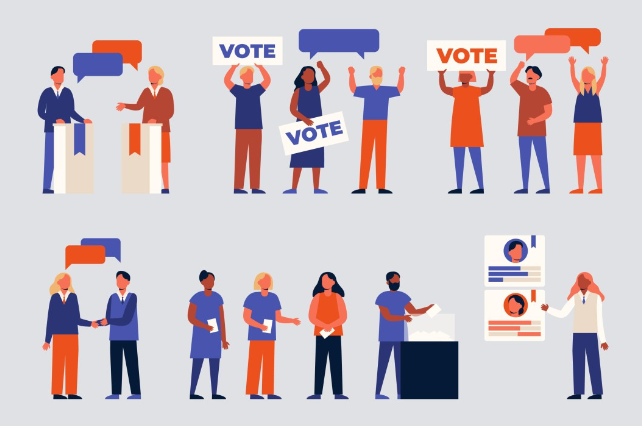The Science of Understanding Voting Patterns Figgerits: Decoding Voter Behavior

Psephology is the science of understanding voting patterns, involving the examination and statistical analysis of elections and polls. In this multidisciplinary field, researchers study the factors that influence voting behavior and analyze data to gain insights into voter preferences.
Understanding voting patterns is essential for political scientists and policymakers to determine the motivations behind voting decisions and develop strategies to engage with different voter demographics. By delving into the science of voting patterns, researchers can identify trends and patterns that help explain election outcomes and shape future campaigns.
Contents
Exploring Psephology
Delve into the intriguing field of Psephology, the study of understanding voting patterns Figgerits. Analyzing elections and polls through statistical analysis makes Psephology a captivating science of deciphering voter behavior. Unravel the complexities of voting trends with this fascinating exploration.
Definition Of Psephology
Psephology is the scientific study and statistical analysis of elections, voting behavior, and public opinion. It involves examining various factors that influence voting patterns, such as demographics, political ideology, and historical trends.
Role Of Psephology In Political Science
Psephology plays a crucial role in political science by providing valuable insights into the dynamics of electoral processes. It helps in understanding voter motivations, predicting election outcomes, and formulating effective campaign strategies for political parties and candidates. Additionally, psephological research contributes to the development of informed policies and governance decisions based on the analysis of voting patterns and public sentiment.
Deciphering Voter Behavior
Deciphering voter behavior requires understanding the science of voting patterns, known as Psephology. In a multidisciplinary field, Psephology uses statistical analysis to examine elections and polls, providing insights into voter trends and behavior. Understanding these patterns is essential for political scientists and analysts.
Title: Deciphering Voter Behavior
Deciphering voter behavior is a crucial aspect of understanding voting patterns in any election. The scientific study of voting patterns, known as psephology, plays a vital role in analyzing and predicting voter behavior.
Title: Understanding Voting Patterns
Voting patterns can provide valuable insights into the mindset and preferences of voters. By analyzing these patterns, researchers can identify trends and make predictions about future election outcomes.
Title: Factors Influencing Voting Behavior
Several factors influence voting behavior and contribute to the formation of voting patterns. These factors include:
- Socioeconomic Status: Social and economic factors such as income, education level, and occupation can shape an individual’s voting preferences.
- Political Ideology: Personal beliefs and values, as well as alignment with a particular political party, can significantly impact voting behavior.
- Demographics: Age, gender, ethnicity, and religious affiliation can influence how individuals vote.
- Campaign Messaging: The messages, strategies, and campaign efforts of political candidates play a vital role in voter decision-making.
- Media Influence: Mass media plays a significant role in shaping voter opinions and attitudes towards candidates and issues.
- Geographical Factors: Regional differences and geographic location can impact voting patterns due to variations in local issues and concerns.
Understanding these factors and how they interact is key to comprehending the complex web of voter behavior. Analyzing voting patterns in conjunction with these influencing factors allows researchers to gain a deeper understanding of how and why people vote the way they do.
Unraveling Figgerits
Discover the fascinating field of Psephology, the science that delves into understanding voting patterns, including elections and polls. Unravel Figgerits and gain insights into the science behind electoral trends.
What Is Figgerits?
Figgerits, in the context of the science of understanding voting patterns, refers to a fascinating phenomenon that has caught the attention of researchers and political analysts. Figgerits can be described as intricate patterns that emerge from the analysis of voting behavior, shedding light on the motivations and choices of voters.
Fascinating Aspects Of Figgerits
Figgerits unveil a wealth of information about how voters make decisions and select their representatives. Here are some intriguing aspects of Figgerits:
- Complexity and diversity: Figgerits showcase the complexity and diversity of voter preferences, challenging the notion of a homogenous electorate. These patterns reflect a nuanced interplay between individual beliefs, values, and socio-political factors.
- Demographic insights: By analyzing Figgerits, researchers gain valuable insights into how different demographics influence voting patterns. This information helps in understanding the dynamics between various groups and their impact on elections.
- Temporal evolution: Figgerits demonstrate how voting patterns evolve over time. They reveal shifts in public sentiment, the impact of major events, and the changing priorities of voters.
- Geographical variations: Figgerits also highlight significant geographical variations in voting behavior. These variations can be related to factors such as culture, economy, and regional politics, giving us a deeper understanding of voter preferences across different regions.
- Identification of swing voters: Figgerits can identify swing voters, who play a crucial role in determining election outcomes. By analyzing their behavior and preferences, political campaigns can target strategies to sway their vote.
Understanding Figgerits provides a comprehensive view of the intricate web of voter decision-making. It allows us to decipher the underlying factors that shape political outcomes and design effective strategies that resonate with the electorate.
The Connection Between Voting And Figgerits
The science of understanding voting patterns, known as psephology, involves the examination and statistical analysis of elections and polls. It is a multidisciplinary field that studies the factors influencing voting behaviors.
Overlap In Analytical Methods
The study of voting patterns and Figgerits involves overlapping analytical methods that delve into the statistical analysis of elections and voter behavior. Psephology, a division of political science, shares analytical similarities with understanding Figgerits, as both disciplines use data interpretation to uncover patterns and predict future trends.
Impact Of Figgerits On Voter Behavior
Understanding Figgerits can significantly impact voter behavior. Figgerits, being the science of deciphering complex patterns, can influence how voters perceive political messages and candidates. By comprehending Figgerits, analysts and politicians can tailor their political strategies to resonate with specific voter segments, potentially swaying election outcomes.
Analyzing The Role Of Electoral Science
Analyzing the role of electoral science is essential for understanding voting patterns in Figgerits. Psephology, a division of political science, employs statistical analysis to examine elections and polls, providing valuable insights into the factors influencing voting behavior. Understanding electoral science helps in comprehending the dynamics of voting patterns.
Multidisciplinary Nature Of Electoral Science
Electoral science involves various disciplines like political science, sociology, statistics, and psychology.
Understanding voting patterns requires expertise from diverse fields to analyze data accurately.
Significance In Understanding Voting Dynamics
Electoral science plays a crucial role in deciphering the complexities of voter behavior.
It provides insights into the factors influencing voting decisions and election outcomes.
Read: kamala Sohonie
Conclusion
Understanding voting patterns, or psephology, offers valuable insights into electoral behavior. By studying the factors that influence voter decisions, we gain a deeper understanding of political landscapes. This knowledge allows us to make informed predictions and shape more effective campaigns.
With psephology, we can better comprehend the complexities of democracy.
Read also: The Bold And the Beautiful Message Boards



